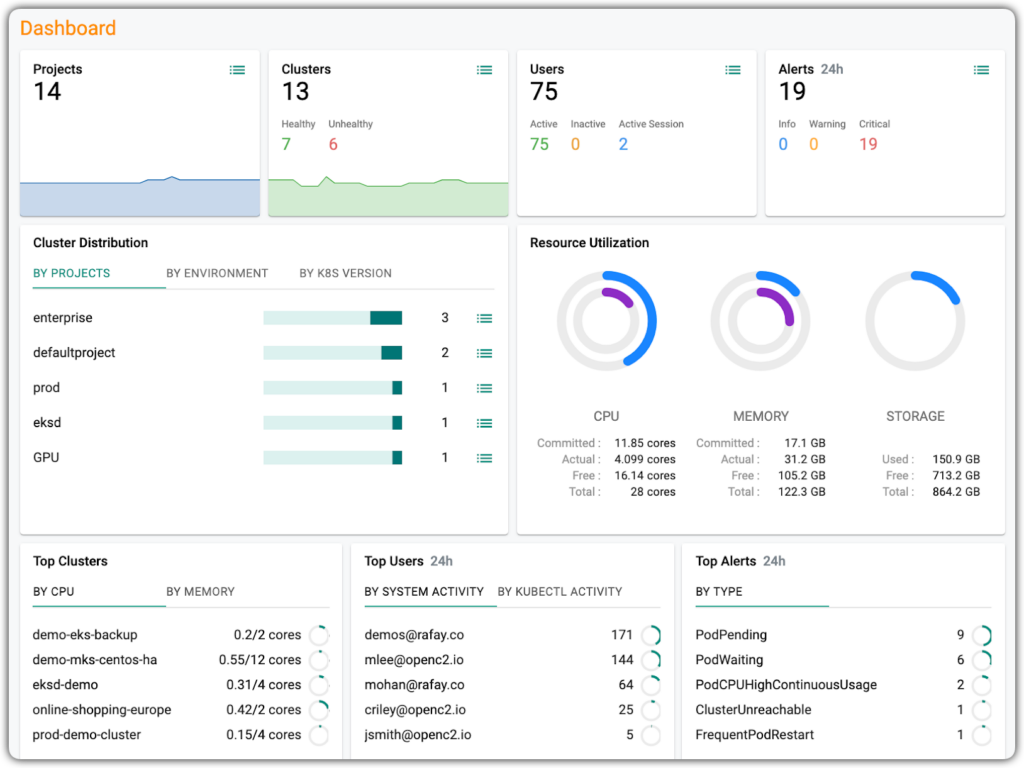Rafay Extends Reach of Kubernetes Management Platform
Rafay Systems this week extends its Kubernetes Management Cloud (KMC) to provide more control over entire Kubernetes environments spanning a fleet of clusters.
In addition, the latest version of the Kubernetes management platform now includes dashboards to provide greater visibility into fleets of Kubernetes clusters.
KMC also now provides the ability to override cluster blueprints and workloads in a way that makes it simpler to configure Kubernetes clusters using a set of highly repeatable processes that each IT team can customize.
Finally, Rafay Systems has added the ability to upgrade Kubernetes clusters with a single click, including the distribution of cloud services such as Amazon Elastic Kubernetes Service (EKS).
Haseeb Budhani, CEO, Rafay Systems, says the ability to set up the repeatable configuration processes across an entire fleet of clusters—or any subset of them—is the difference between simply administrating Kubernetes and becoming a so-called KubeMaster. The challenge is that achieving that level of expertise shouldn’t require IT teams to master every nuance of a Kubernetes environment when there is a platform that automates management processes at a higher level of abstraction, notes Budhani.
IT teams should also be able to manage those processes using either a graphical user interface (GUI) or application programming interface (API) within the context of a GitOps workflow as they best see fit, adds Budhani.
As more organizations begin to deploy Kubernetes at scale, the need to centralize the management of clusters is becoming a more pressing concern, says Budhani. IT organizations need to reduce the amount of time spent managing Kubernetes infrastructure to enable DevOps teams to spend more time on building and deploying applications, Budhani adds.
However, the best way to manage Kubernetes clusters is still subject to debate. Some organizations that have adopted DevOps best practices are hiring site reliability engineers (SREs) to manage their Kubernetes environments. SREs, however, are challenging to find and often hard to retain. Platforms such as KMC promise to make Kubernetes more accessible to the average IT administrator while at the same time providing DevOps teams with programmable access.
In time, as management platforms that provide access to both APIs and GUIs become more widely deployed, the level of collaboration among administrators working for a centralized IT organization and DevOps teams should improve. There are, for example, a lot of low-level tasks that don’t require the expertise of an SRE to complete. However, Kubernetes environments are complex in part because there are so many additional components and modules necessary to, for example, provide monitoring capabilities. A full stack of software deployed on top of a Kubernetes cluster can require a fair amount of expertise to deploy across hundreds of systems.
Regardless of how fleets of Kubernetes clusters are managed, the one inescapable fact is that there are a lot more of them showing up in Kubernetes environments. The issue now is finding a way to manage them all without hiring a small army of IT professionals.





